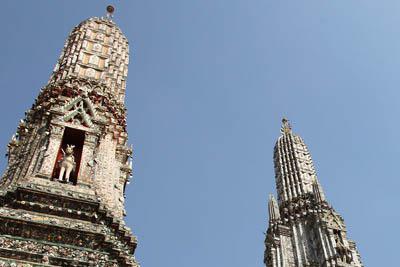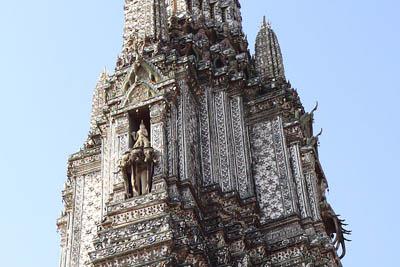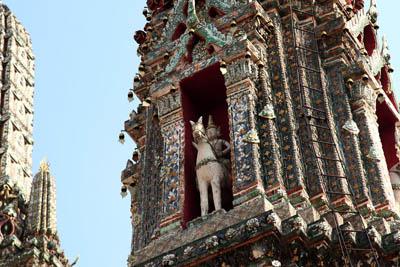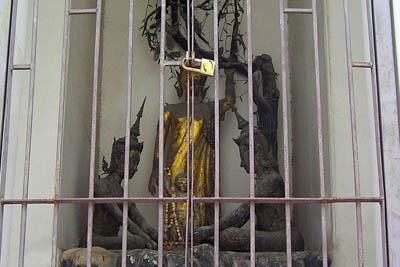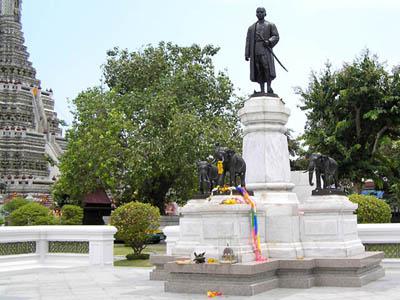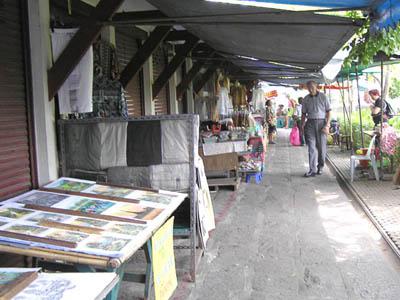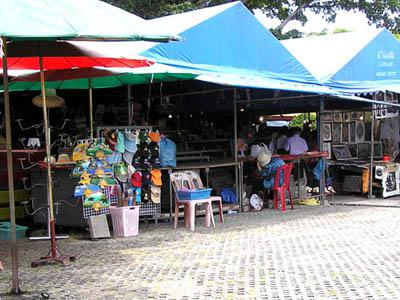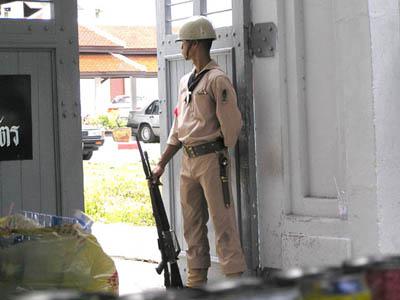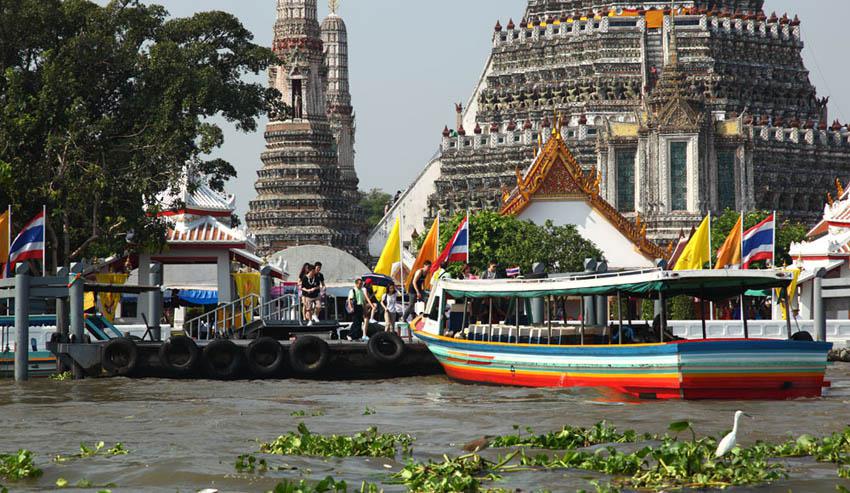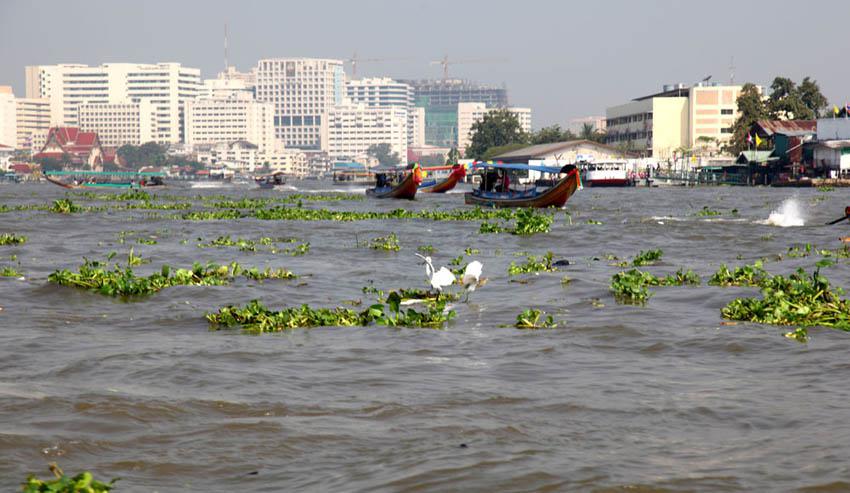Thailand - Wat Arun (Bangkok)
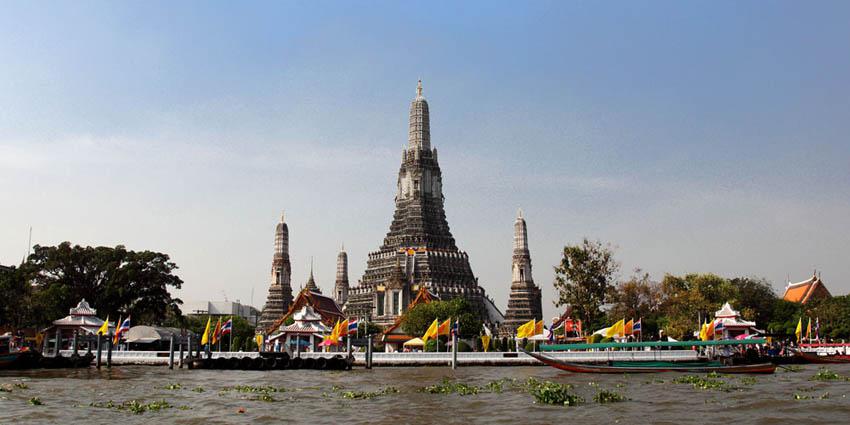 Wat Arun (Wat Arunratchawararam Ratchaworamahavihara),
Wat Arun (Wat Arunratchawararam Ratchaworamahavihara),also known as "Temple of the Dawn", is located on the west bank of Chao Phraya River in Thonburi. It's said that the temple is the most beautiful at dawn. The famous temple, Wat Po, is on the opposite side of the river.
Wat Arun provided the setting for the third part, "Akatsuki no Tera (meaning "Temple of the Dawn" in Japanese)" of the novel, "Hojo no Umi (The Sea of Fertility tetralogy)", written by the Japanese famous novelist, Yukio Mishima (1925-1970).
- History of Wat Arun
It seems that Wat Arun was just a temple in Ayuttaya period called " Wat Mokok". When King Taksin built a new capital in Thonburi after defeating the Burmese, he renamed the temple " Wat Jaeng " (" Jaeng " means "dawn ") as a royal temple and enshrined the famous Emerald Buddha.
After that, the temple was renamed from " Wat Jaeng " to " What Arunratchatharam " around the period of Rama II, and then changed into " Wat Arun" around the era of Rama IV.
- Appearance of Prang
- Statues in the Prang
- Emissaries supporting the Prang
- Other decoration
- Chinese style statues
- Others
[Wat Arun] Appearance of Prang |
|||
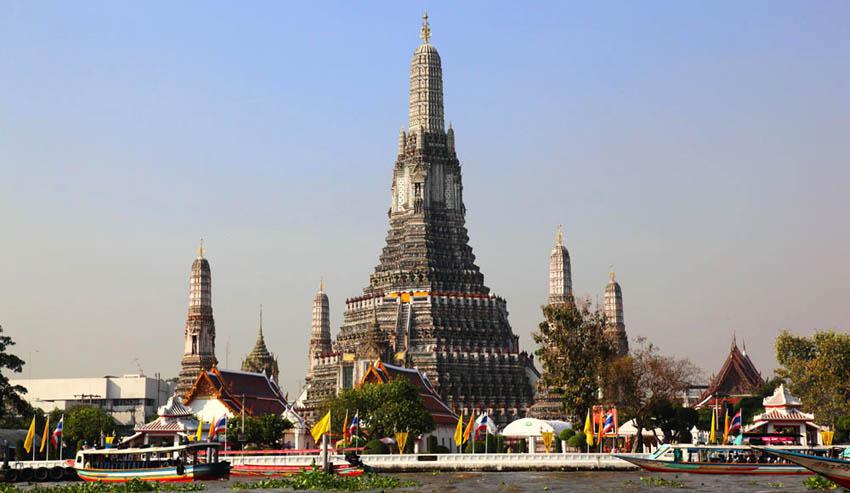 What Arun has the huge and sky-kissing tower, or prang, in the center
surrounded by 4 smaller prangs.
What Arun has the huge and sky-kissing tower, or prang, in the center
surrounded by 4 smaller prangs.It modeled Mt. Kailash in Tibet that is the sacred place where the God of destruction and creation, Shiva (or Siva) lives, the supreme God in Shaivism that is one of the major branches of Hinduism or Brahmanism. The famous " Phanom Rung " in the northeast of Thailand also symbolized Mt. Kailash, that is, it looks like there is a strong connection between history of Thailand and Hinduism or Brahmanism.
|
|||
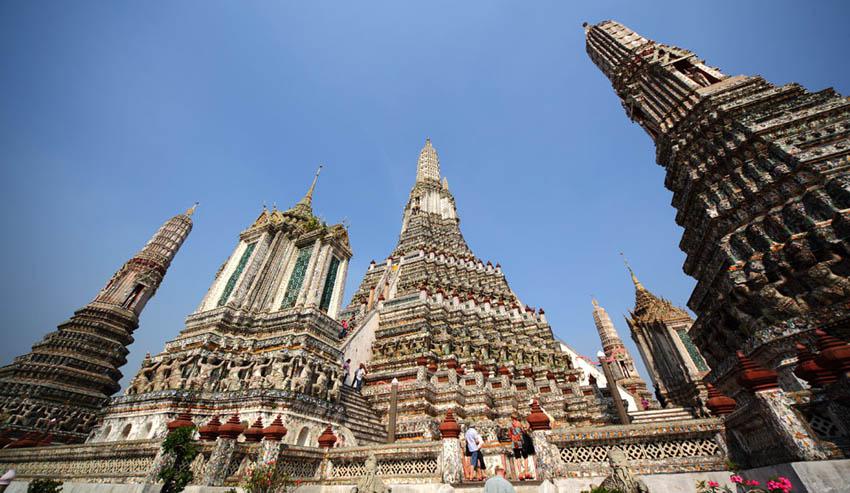
|
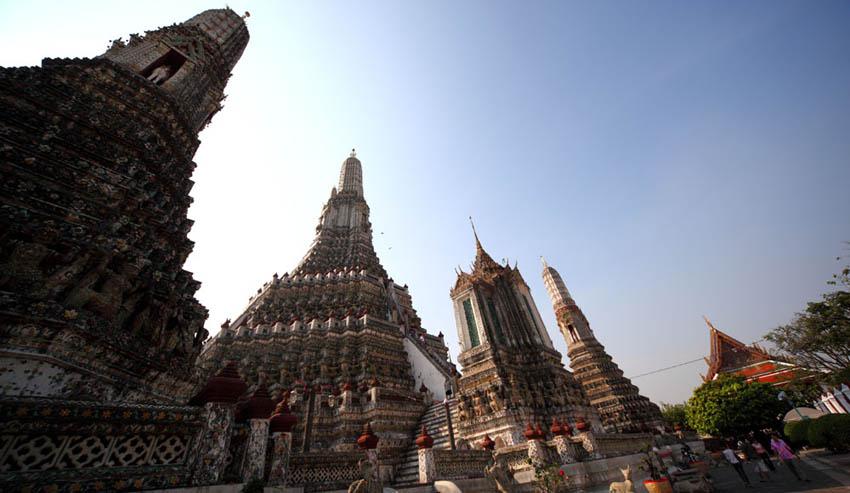
|
||
| Very beautiful appearance 1 Huge tower or prang in the center and 4 smaller prangs around that. Originally, this prang was 16m high, and upgraded to about 80 m high by Rama III. |
|||
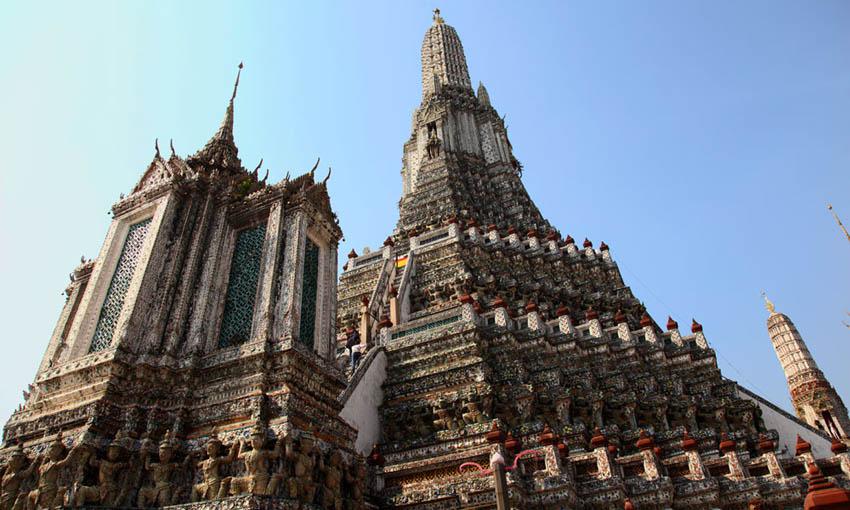
|
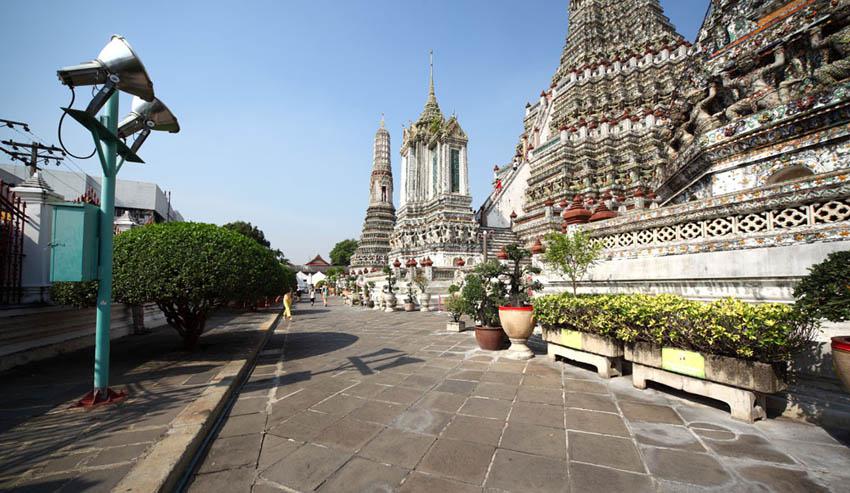
|
||
| Very beautiful appearance 2 The huge tower or prang in the center. |
Very beautiful appearance 3 Around the prang in the center. |
||
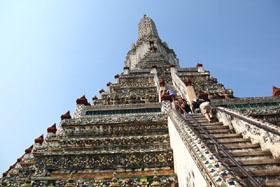
|
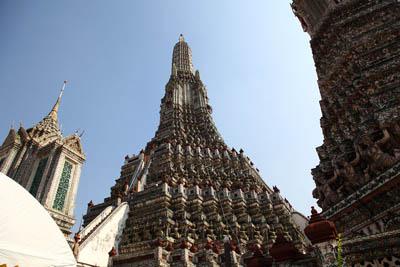
|
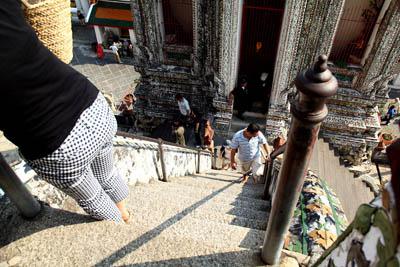
|
|
| Really steep stairs 2 Another view. |
Really steep stairs 3 Looking down from the top of the stairs. |
||
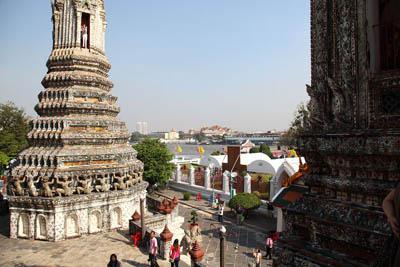
|
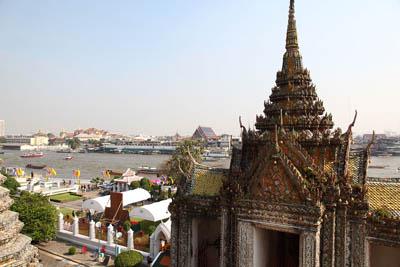
|
||
| Really steep stairs 1 This steep stairs are for visitors to make their heads down against Buddha automatically. |
The view from the top of the stairs Very high and I felt scary, but the scenery from there is wonderful. |
||
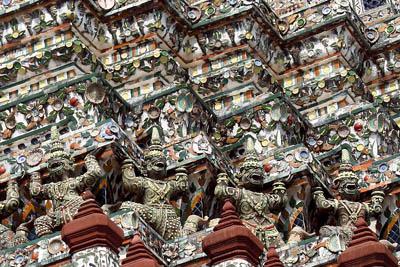
|
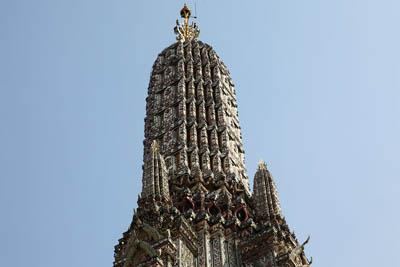
|
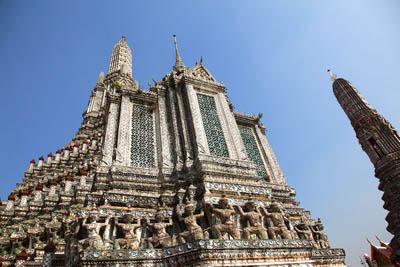
|
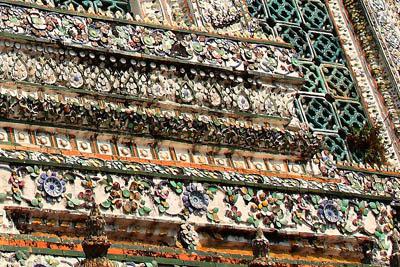
|
| Decoration of the tower Very elaborate; walls with detailed and elegant decorations, monkey-like decorations and pot-like decorations. |
Upper part of the prang Of course, not a lightning rod. This symbolizes "Linga", the image of Shiva in Hinduism. |
Hall There are two halls in front of the prang. One is a main hall when Wat Arun was called "Wat Mokok" in Ayuttaya period, and the other is for worship. It seems that the Emerald Buddha was enshrined here in Thonburi period. |
Decoration of the wall Decorated with flower pattern. It is made from pieces of Chinese pottery. |
[Wat Arun] Emissaries supporting the Prang |
|||
The prang has various decorations on the wall, and some of them are supporting
figures of the tower. They are demons or monkeys that are from the story
of " Ramakien ", that is a Thai version of the Ramayana. The
Ramayana is considered to be one of the great epics of Hinduism. The Grand Palace in Bangkok has also same figures.
|
|||
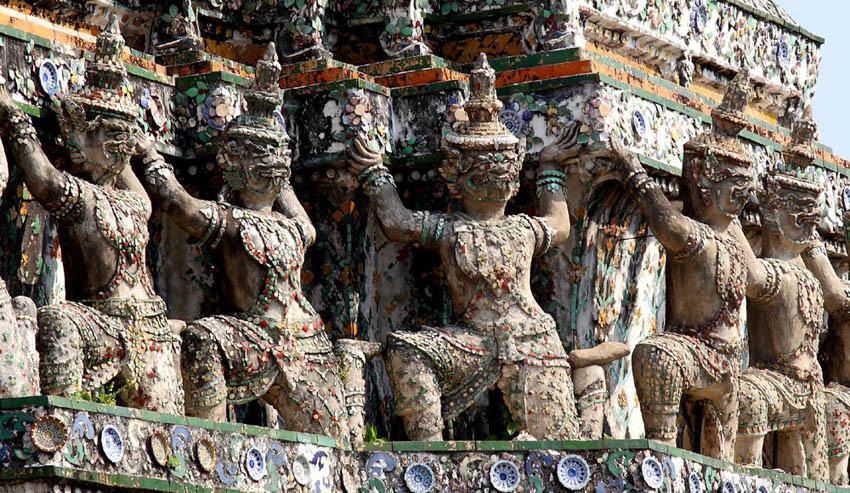
|
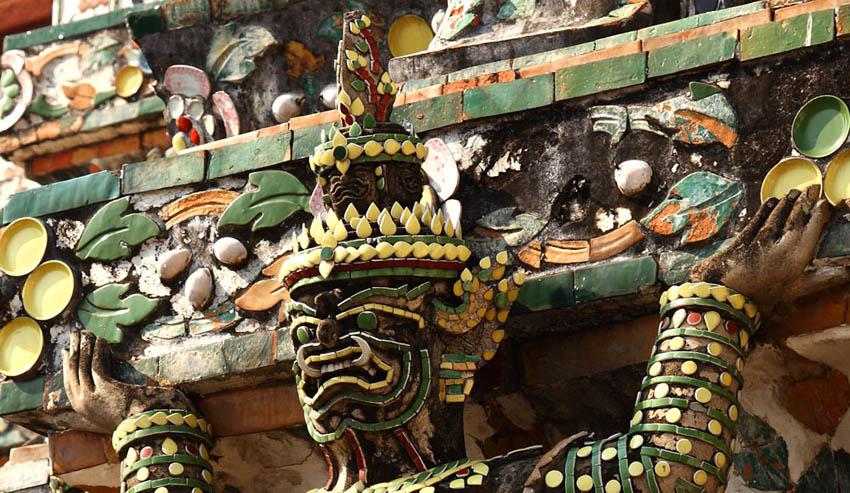
|
||
| Supporting Figures 1 Are they demons ? |
Supporting Figures 1 Are they demons ? |
||
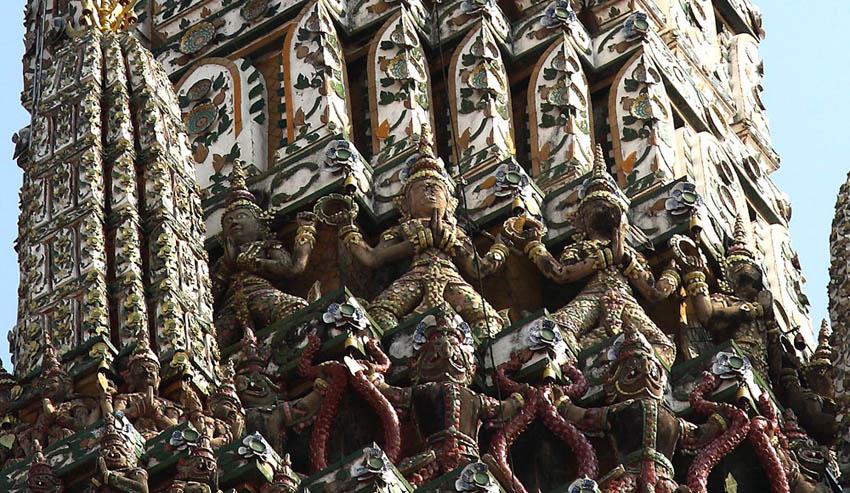
|
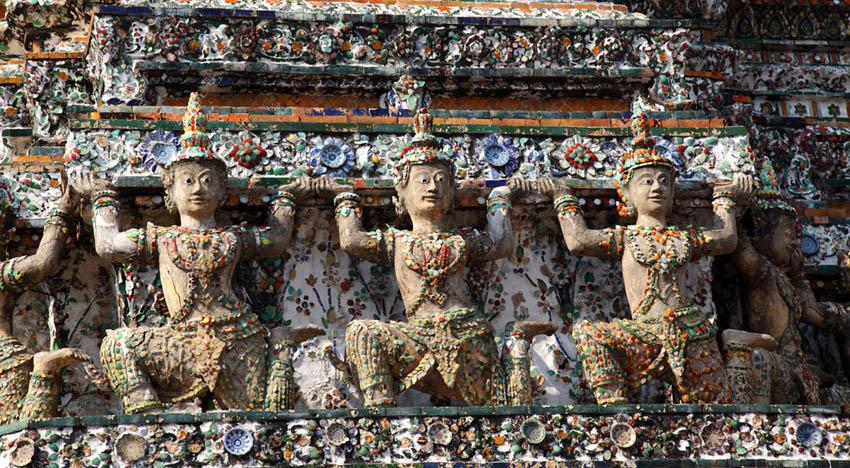
|
||
| Supporting Figures 3 Around the top of the center prang. Garudas and servants ? |
Supporting Figures 4 They look like human-beings. Servants ? |
||
[Wat Arun] Other decoration |
|||
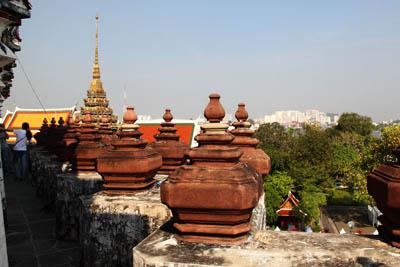
|

|
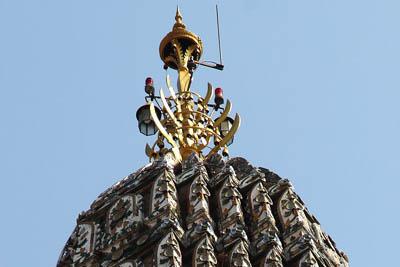
|
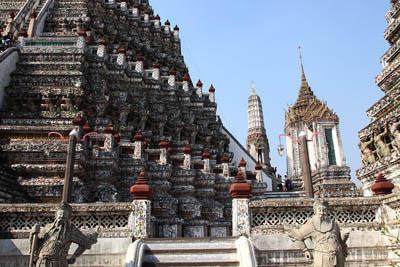
|
| Pots Pot-like decorations are here and there. |
Around the base Decorations of the base of the prang. They are Kinnaras (creatures with the upper body of human being and lower part of animals) like in Grand Palace ? |
The top of the prang Decorations of the top of the prang. |
Around the prang |
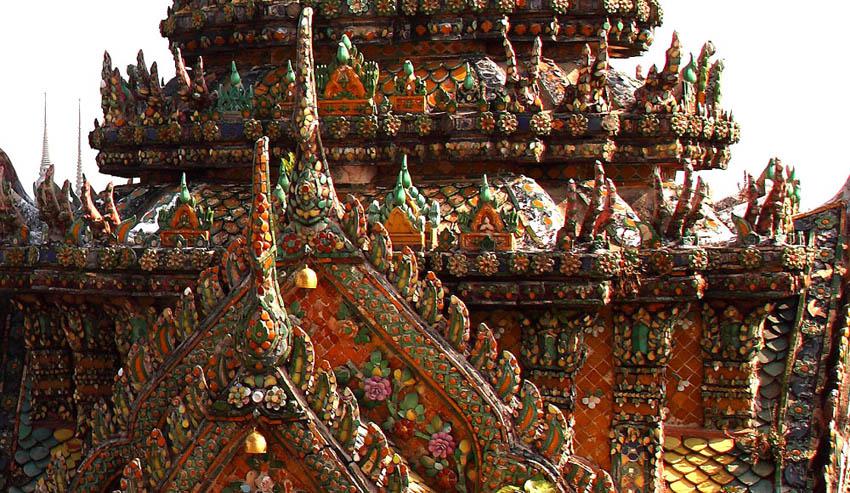
|
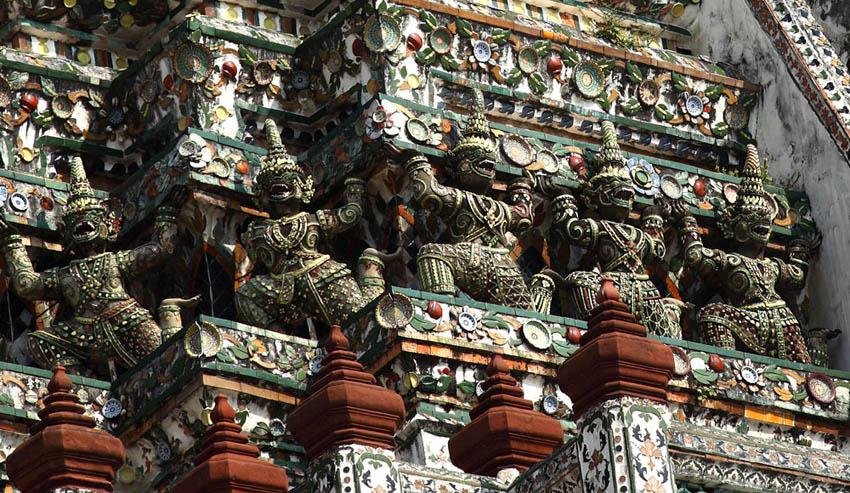
|
||
| Decorations of the hall. | Decorations of the prang. | ||
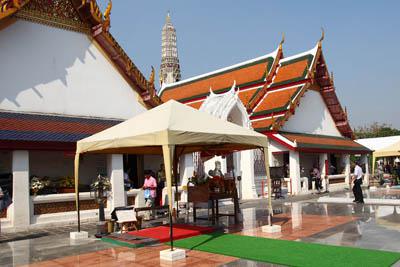
|

|

|
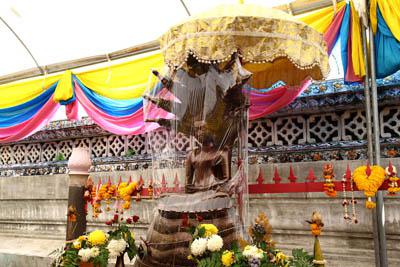
|
| Around the entrance | Reclining Buddha and an explanation board Buddha is reclining around the entrance. |
The entrance The entrance of Wat Arun. Statues in Chinese style are standing on the both sides. |
Buddha images Buddha images are enshrined. |
[Wat Arun] Chinese style statues |
|||
| A lot of Chinese style statues can be seen in Wat Arun (like in Grand Palace in Bangkok). This is because the trade between Thailand and China flourished long time ago and when trading ships were coming back to Thailand from China, they put statues on the bottom to make the ship stable. |
|||
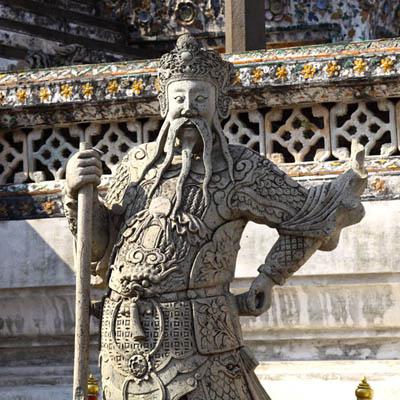 |
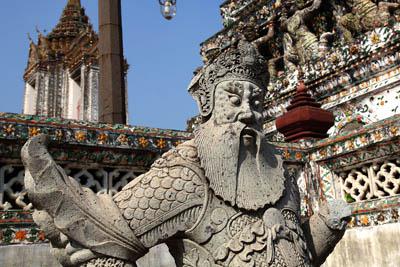 |
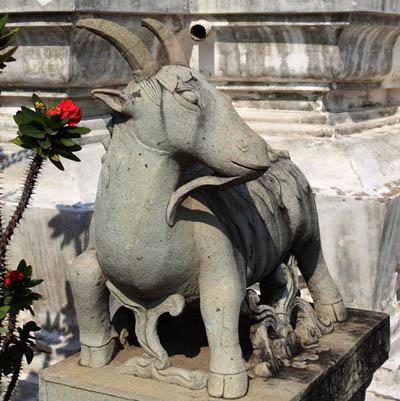 |
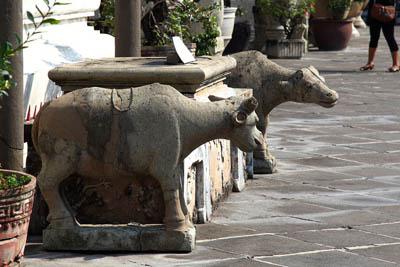 |
| Chinese style statue 1 | Chinese style statue 2 | Chinese style statue 3 人There are not only human being style but animals style statues such as monkeys. |
Chinese style statue 4 |
